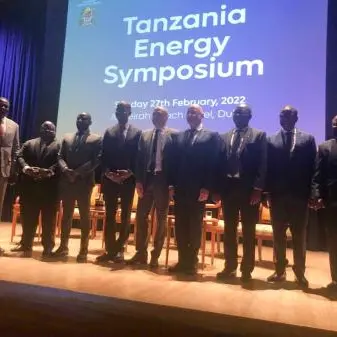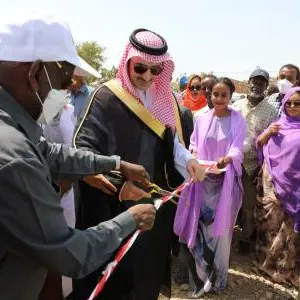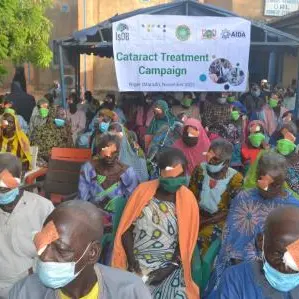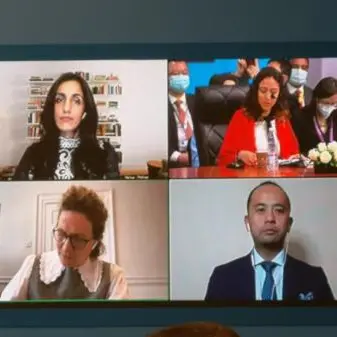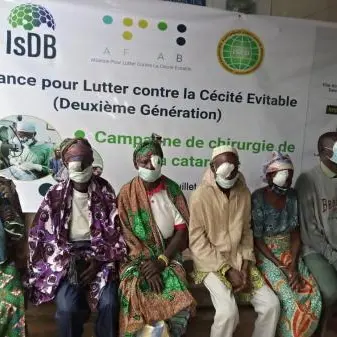On March 26, the Executive Board of the International Monetary Fund (IMF) concluded the Article IV consultation,[1] mid-term review under Flexible Credit Line Arrangement, first review under the Resilience and Sustainability Facility and Rephasing of access under Resilience and Sustainability Facility with Morocco.
The Moroccan economy continued to show resilience to negative shocks. Despite water scarcity, the September 2023 earthquake, and challenging external conditions, economic activity picked up to 3 percent in 2023 thanks to strong exports and a rebound of domestic demand. Notwithstanding the pickup in growth, unemployment rose to 13.3 percent at the end of 2023, mainly reflecting the impact of water scarcity on the agricultural sector. GDP growth is expected to gradually pick up to 3½ percent over the next few years, boosted by the continued implementation of the structural reform agenda.
Inflation fell over the course of 2023, mainly as the impact of supply shocks faded. This justified BAM’s pausing the interest rate tightening cycle since June last year, after three consecutive increases from September 2022. The dirham continued to move within the fluctuation band of ±5 percent.
The current account deficit narrowed significantly. This reflects both a reduced trade deficit in goods (driven by the lower import prices of energy, raw and intermediate goods, and food items, as well as the robust performance of automotive and electronics exports), buoyant export of services (both tourism and non-tourism related), and the continued expansion of inward remittances.
The central government fiscal deficit improved more than envisaged in the 2023 Budget. The 2023 overall deficit closed at 4.4 percent of GDP, about 0.5 percent of GDP less than projected in the 2023 Budget. This reflects better-than-expected fiscal revenues (with non-tax revenues boosted by the Earthquake Fund) that more than offset higher-than-planned spending.
The implementation of the announced structural reform agenda has continued. The first two pillars of the generalization of the social protection system, i.e., the extension of compulsory basic health insurance and the introduction of cash transfers to poor families, have now been implemented. Further steps were taken to restructuring SOEs, operationalizing the Mohammed VI Investment Fund and new Charter of Investment, and reforming both education and health care systems.
Executive Board Assessment [2]
Executive Directors agreed with the thrust of the staff appraisal. They welcomed the resilience of the Moroccan economy to recent shocks and commended the authorities’ very strong macroeconomic policies and institutional frameworks, which supported the pick-up in growth and decline in inflation. Noting downside risks and high uncertainty surrounding the outlook, Directors emphasized the importance of continued prudent macro-economic policies and steadfast implementation of structural reforms to achieve a stronger, more resilient, and more inclusive growth.
Directors supported Bank Al-Maghrib’s (BAM) monetary policy stance and they concurred that further changes in policy rates should remain data-dependent. Resuming the central bank’s planned transition to an inflation-targeting framework by preparing for the removal of the peg as inflation continues to fall would also be important.
Directors concurred on the need to advance fiscal consolidation and agreed that the 2024 budget strikes the right balance between rebuilding fiscal buffers and financing structural reforms. They encouraged the authorities to consider further tax and spending measures to secure and possibly accelerate the planned reduction of public debt. Directors encouraged further strengthening the Medium-Term Fiscal Framework, including by reporting the budgetary implications of public private partnerships and the mobilization of government real assets, and to continue working on a new, debt-anchored, fiscal rule.
Directors welcomed Morocco’s progress in strengthening its financial supervisory and regulatory framework. They commended the authorities’ efforts in introducing capital surcharges, developing a secondary market for NPLs, improving the bank resolution framework, and preparing a green financial strategy. While systemic risks to the financial system appear to be limited, Directors emphasized the need to continue monitoring financial institutions’ balance sheet exposures, including to climate-related risks.
Directors commended the authorities’ strong commitment to implement structural reforms. The reform of the social protection, health, and education systems would improve fairness and quality of access and sustain human capital in the long run. The reforms of SOEs and the operationalization of the Mohammed VI Fund and the new Charter of Investment would stimulate private investment and create sustainable jobs. Continued efforts to reduce dependence on fossil fuels, address water scarcity, enhance governance, and tackle gender inequality are essential to bolster Morocco’s potential growth.
Directors were encouraged by the authorities’ progress on meeting the conditions of the RSF arrangement. They welcomed the ongoing work related to the national water program and the plans to achieve zero net emissions by 2050. Directors encouraged the timely implementation of the measure on higher VAT on fossil fuels, while mitigating its social impact. They underscored the importance of close collaboration with development partners.
Directors agreed that Morocco continues to meet the qualifications criteria for the FCL arrangement, given its very strong macroeconomic policies and institutional policy frameworks, and its commitment to continuing reforms.
It is expected that the next Article IV consultation with Morocco will be held on the standard 12-month cycle.
| Morocco: Selected Economic Indicators, 2019-29 | ||||||||||||||||||||||||||||||||||||||||||||||||||||||||||||||||||||||||||||||||||||||||||||||||||||||||||||||||||||||||||||||||||||||||||||||||||||||||||||||||||||||||||||||||||||||||||||||||||||||||||||||||||||||||||||||||||||||||||||||||||||||||||||||||||||||||||||||||||||||||||||||||||||||||||||||||||||||||||||||||||||||||||||||||||||||||||||||||||||||||||||||||||||||||||||||||||||||||||||||||||||||||||||||||||||||||||||||||||||||||||||||||||||||||||||||||||||||||||||||||||||||||||||||||||||||||||||||||||||
Sources: Moroccan authorities; and Fund staff estimates. ––––––––––– 1/ Include grants. 2/ Includes credit to public enterprises. | ||||||||||||||||||||||||||||||||||||||||||||||||||||||||||||||||||||||||||||||||||||||||||||||||||||||||||||||||||||||||||||||||||||||||||||||||||||||||||||||||||||||||||||||||||||||||||||||||||||||||||||||||||||||||||||||||||||||||||||||||||||||||||||||||||||||||||||||||||||||||||||||||||||||||||||||||||||||||||||||||||||||||||||||||||||||||||||||||||||||||||||||||||||||||||||||||||||||||||||||||||||||||||||||||||||||||||||||||||||||||||||||||||||||||||||||||||||||||||||||||||||||||||||||||||||||||||||||||||||
[1] Under Article IV of the IMF's Articles of Agreement, the IMF holds bilateral discussions with members, usually every year. A staff team visits the country, collects economic and financial information, and discusses with officials the country's economic developments and policies. On return to headquarters, the staff prepares a report, which forms the basis for discussion by the Executive Board.
[2] At the conclusion of the discussion, the Managing Director, as Chairman of the Board, summarizes the views of Executive Directors, and this summary is transmitted to the country's authorities. An explanation of any qualifiers used in summing up can be found here: https://apo-opa.co/3JGy8x1

